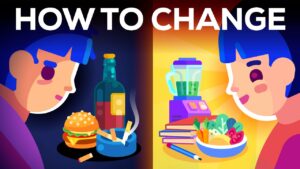In this video, the speaker discusses the importance of understanding what to eat when breaking a fast during intermittent fasting. They explain that the purpose of fasting is often for weight loss and reducing insulin resistance, but there are also other benefits like giving the digestive tract a break, resetting the bacterial flora, and promoting autophagy for improved immunity and overall health. The speaker suggests starting with fat-rich foods like MCT oil, butter, and ghee when breaking a shorter fast, and gradually introducing fermented foods, fiber-rich vegetables, and bone broth. They also mention that bergamot oil in Earl Grey tea may enhance the effects of autophagy during fasting.

Our Summaries are written by our own AI Infrastructure, to save you time on your Health Journey!
Key Insights:
- Intermittent fasting can help reduce insulin resistance and promote weight loss and fat burning.
- When breaking a fast, it’s important to have a strategy to maximize the benefits and not undo the fasting effects.
- The duration of the fast determines the level of caution and planning needed when breaking the fast.
- Starting with fat (e.g., MCT oil, butter, ghee) can provide energy and satiety without spiking insulin levels.
- Protein should be reintroduced gradually, as too much of it can disrupt autophagy, a key fasting benefit.
- Feeding the gut with fermented foods (e.g., sauerkraut, yogurt), plant fiber, and bone broth can support gut healing and replenish beneficial bacteria.
- After gentle food, refeeding should include building blocks like eggs, fish, meat, chicken, and lamb to promote tissue growth and healing.
- Bergamot oil in Earl Grey tea has been shown to enhance the effects of autophagy during fasting.
Transcript
Hello Health Champions. Intermittent fasting can be a very powerful tool to reduce insulin and to kick-start weight loss and fat burning but it may be just as important to understand what kind of food to eat when we break the fast so that we maximize the benefits or at least we don’t undo the benefits of the fast that we just did.
The very word breakfast of course does not actually refer to the meal that we eat in the morning it refers to eating something after a period of not eating. And if we have a strategy to what to eat after we have been fasting for a while then we can add to the benefit of that fasting but in order to have that strategy we first need to remember why are we doing the fasting in the first place so the vast majority of people are going to do it for weight loss to reduce insulin resistance which of course is related to weight loss because when we’re insulin resistant that’s what puts on the weight so we want to reverse that and also the advanced stage of insulin resistance called type 2 diabetes.
So this is where most people are going to do it but there’s many other benefits, a second benefit would be that we’re giving our digestive tract a break now there’s a huge turnover of cells of our gut lining we get a new gut lining basically every three days and if there’s irritation and we keep putting food in there it can be difficult for that gut to regenerate properly but if we give it a break through fasting now we give it a chance for gut healing. We can reverse some leaky gut and we also have a chance to reset the biome or bacterial flora. Because if we eat a bunch of carbs and sugar then we tend to unbalance the flora so if we stop eating for a while then we have a chance for that to reset itself.
And a third reason would be for general health benefits because we’re getting something called autophagy which is a form of upgraded recycling when we don’t eat when the resources that we’re adding are scarce the body gets better and better at recycling and using the resources we already have which means that we clean up we improve our immunity and we have all sorts of different health benefits. It can be very powerful to reverse disease but of course if we’re reasonably healthy then we might want to use it to prevent disease and if we’re concerned with immune system like a lot of people are then we can use it to get an immune boost or simply just to maintain immunity and health.
And even if you personally started intermittent fasting for primarily one of these reasons it doesn’t hurt to understand the whole picture and the other benefits so that you can optimize all of these while you’re at it, right? And make sure that after we talk about how to break a fast and the best foods to do that that you stay tuned to the end for a really cool fasting bonus.
The fasting duration is going to have a lot to do with how careful you have to be and how strategic you have to be in your planning so if you’re just doing regular intermittent fasting and what I mean by that is you’re doing 16 to 24 hours of not eating on an average day then you just do the usual you don’t really have to plan around that whatever you do to get the results you keep learning about good foods if you’re eating low carb high fat if you’re eating keto if you’re eating paleo or maybe if you’re into the autoimmune protocol then you don’t have to change anything up you just eat your usual stuff but if you go a little bit longer than this like 36 hours now you want to start exercising just a little bit of caution because the longer you go without food like I said the gut lining is regenerating and you have a whole machinery of digestion down there so when you don’t eat for a while all those processes get put on the back burner they down regulate their function they back off a little bit and you don’t want to shock the system too much when you start eating again so the longer you go the more careful you want to be if you’re fasting for three to five days now it’s even more important that you have a plan and a strategy when you get back into it a general rule of thumb is going to be that the longer you go you want to be gentle and you want to introduce food gradually you want to start with things that are easier to digest and then move on to heavier foods and the longer you go the more gradual you want to be the more time you want to give for your digestive tract to sort of warm up and get back into action.
So for most of those benefits that we talked about it’s a really good idea to start with fat first so a really good one is going to be an mct oil and you just need a little bit of that you can also start with butter and ghee you can put these in a tea or a coffee you can use olive oil you can use avocado which is a little more substantial but it’s still a fairly gentle food and it’s high in fat and you can also use nut butters now that’s going to be a little different because it’s going to be a little higher in protein so if we start with the mcts they’re going to give you a quick energy boost and it doesn’t take much so I would just start with a teaspoon or maybe two and I’ve talked about that in another video what this is going to do it’s going to provide some satiety but you’ve gone all this time without food so your insulin has been dropping and now you can have a little energy you can boost your satiety feel a little full without jeopardizing your insulin you’re going to get with mostly fat you get a minimal insulin response and what this does it basically extends the benefits of the fasting because all while you’re eating you’re reducing insulin and now you’re still reducing insulin even though you ate a little bit one more huge benefit of doing it like this is that you reduce the risk of a rebound if you’ve gone all this time without food and you start eating carbs chances are that you’ll go absolutely ravenous that your body starts craving things to make up for the time that you haven’t been eating but if you start with fat now you get a little bit of satiety but without the insulin so you’re much more likely to if you have fat first and then wait an hour that you’re not going to have that crazy rebound eating and with all of these five you’re basically still going to be in ketosis and you’re going to keep reducing insulin.
The last thing we want to talk about though is autophagy because autophagy is this recycling this immune benefit and all that we talked about and protein is going to shut off that so you want to be careful with protein and that’s why nut butters is basically not going to be great for autophagy so if you have some nut butters that can provide a lot of satiety but you want to be careful and maybe just have a tiny little bit if you’re concerned with maintaining autophagy otherwise don’t worry so much.
So when we say feed the gut we’re talking about beneficial bacteria we’re talking about repopulating your biome when you’re fasting you have a chance to create a reset and now you want to populate it with the good stuff so now you start adding in fermented things you could take some probiotics but even better is if you eat natural probiotics that are already in the food so sauerkraut is fermented cabbage but you could also use any kind of fermented vegetable it’s going to be great another great source of bacteria is yogurt which is fermented dairy you could also do sour cream which is a little higher in fat and then the next step in feeding the gut in repopulating is to give the bacteria some fuel so now we’re talking about a wide variety of plant fiber so steamed vegetables vegetable soup etc. these are going to provide a lot of raw materials for these bacteria so first you put in the seed and then it’s like you put in the fuel and the fertilizer.
Another very popular thing with fasting and breaking a fast is bone broth so what do these things do like we said you add the bacteria and then you add some fiber that’s the fuel for the bacteria and then the bone broth contain a lot of good nutrients a lot of gut nutrients that help heal that help sustain and repair the gut and so much have been said about bone broth when it comes to fasting that there’s also a lot of confusion about it people think that well it’s such a good thing that it doesn’t break the fast that’s a question I get a lot does bone broth breaker fast yes it absolutely does but the question we sometimes want to ask is not does it break the fast but how much does it break the fast so bone broth is very low in carbohydrates so it’s not going to stimulate a whole lot of insulin so it depends on how much you have and when you have it but it absolutely breaks the fast however to reintroduce food through bone broth is a great idea because it has lots of those nutrients for gut healing the one thing to keep in mind where it’s different than the other foods we talked about is it is higher in protein than the previous items on the list and therefore it will interrupt autophagy more than the other foods if autophagy is one of your goals.
So at some point obviously you’re going to have to start eating protein but if you’re looking to extend autophagy then bone broth is not the best thing. And next we want to support growth and here are some good building blocks eggs fish meat chicken lamb they’re very powerful building blocks but you don’t want to add them right away if you’ve gone for a longer fast and remember we want to think of fasting as cleansing fasting is great but obviously you can’t do it forever it there’s a time and a place and then you need to do something else so fasting is cleansing it’s a period of rest for the body when you give it a rest now it has resources to devote to other things such as healing and regenerating but you can only go so long before you need some building blocks so you break the fast with fat and with gentle food like vegetables and soups and bone broth and then it’s time for refeeding and now the purpose is growth you need the building blocks to rebuild new healthy tissue and to complete the healing so the cleansing fasting that gives you the rest to start the healing but you can’t complete it unless you start putting in some building locks so you start with some fat to ease into it extend it a little bit that gives you maybe an hour and then you add in maybe some soup or some bone broth or what you like to feed the gut and then you give it another couple of hours and now your gut is a little bit warmed up and ready and now you can start feeding these back in but because you prepped you’re not going to get out of control and be voracious.
Now here’s the bonus I promised you and it’s about an essential oil that’s part of a very popular tea let’s see if you can figure out which one it is teal gray hot teal gray hot gray hot now what does Sean Lou Picard have to do with fasting well I don’t know if he ever engaged in intermittent fasting but his favorite tea, Earl Grey, contains an essential oil called bergamot oil and that oil has been shown to have some benefit in enhancing the effects of autophagy during fasting so next time someone offers you a cup of tea Earl Grey hot be sure to tell them make it so.
If you enjoyed this video you’re going to love that one. And if you truly want to master health by understanding how the body really works, make sure you subscribe, hit that bell and turn on all the notifications so you never miss a life-saving video.





